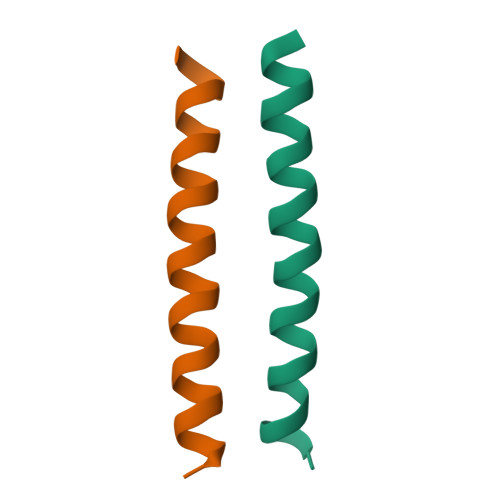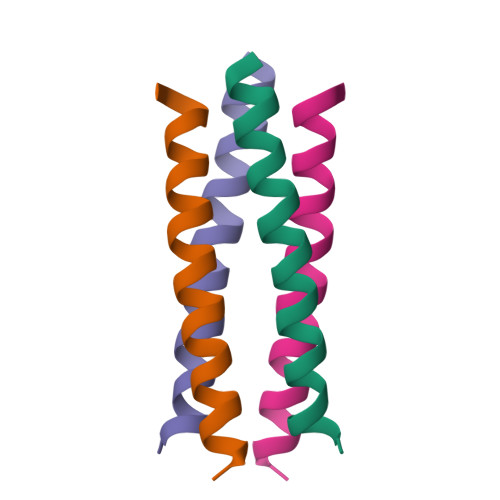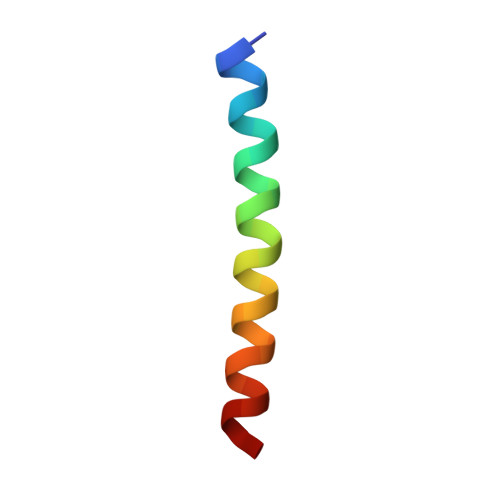Computational design of virus-like protein assemblies on carbon nanotube surfaces.
Grigoryan, G., Kim, Y.H., Acharya, R., Axelrod, K., Jain, R.M., Willis, L., Drndic, M., Kikkawa, J.M., DeGrado, W.F.(2011) Science 332: 1071-1076
- PubMed: 21617073
- DOI: https://doi.org/10.1126/science.1198841
- Primary Citation of Related Structures:
3S0R - PubMed Abstract:
There is a general need for the engineering of protein-like molecules that organize into geometrically specific superstructures on molecular surfaces, directing further functionalization to create richly textured, multilayered assemblies. Here we describe a computational approach whereby the surface properties and symmetry of a targeted surface define the sequence and superstructure of surface-organizing peptides. Computational design proceeds in a series of steps that encode both surface recognition and favorable intersubunit packing interactions. This procedure is exemplified in the design of peptides that assemble into a tubular structure surrounding single-walled carbon nanotubes (SWNTs). The geometrically defined, virus-like coating created by these peptides converts the smooth surfaces of SWNTs into highly textured assemblies with long-scale order, capable of directing the assembly of gold nanoparticles into helical arrays along the SWNT axis.
Organizational Affiliation:
Department of Biochemistry and Biophysics, University of Pennsylvania, Philadelphia, PA 19104, USA.
















